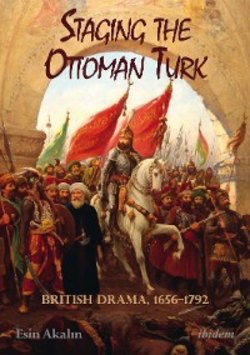Читать книгу Staging the Ottoman Turk - Esin Akalın - Страница 3
Table of Contents
ОглавлениеAcknowledgements
Introduction
Chapter 1: Historical/Theoretical Perspectives 1.1. The Historical Background
1.1.1. Ottoman-Venetian Relations
1.1.2. Anglo-Ottoman Relations
1.1.3. Franco-Ottoman Relations
1.1.4. Decline of the Ottoman Empire
1.2. Theoretical Approach
1.2.1. Knowledge and Power
1.2.2. History and Representation
1.2.3. Perspectives on "Oriental Despotism"
1.3. Conclusion to Chapter One
Chapter 2: Rise to Power: The Great Conquerors 2.1. Sultan Bayezid (1389-1402)
2.1.1. His haughty Throne
2.1.2. European Crowns
2.1.3 Monster with a Cage
2.1.4. Tamerlane (1702)
2.1.5. Conclusion
2.2. Sultan Mehmet II (1451-1481)
2.2.1. Conquest of Istanbul
2.2.2. Memory and Identity
2.2.3. The Christian Hero (1735)
2.2.4. Irene (1749)
2.2.5. Conclusion
2.3. Sultan Suleyman (1520-1566)
2.3.1. Magnificent Solyman
2.3.2 Barbaros
2.3.3. Ibrahim
2.3.4 Mustapha (1609)
2.3.5 The Siege of Rhodes (1656)
2.3.6. Conclusion
Chapter 3: Shifts in Power: Period of Destabilization 3.1. Sultan Osman II (1618-1622)
3.1.1. Tyranny
3.1.2. Osman (1757)
3.1.3. The Sultan (1770)
3.1.4. Osman on the French Stage
3.1.5. Conclusion
3.2. Sultan Murad IV (1623-1640)
3.2.1. Bajazet (1672)
3.2.2. Seraglio
3.2.3. Sultana
3.2.4. Exotic Other
3.2.5. The Sultaness (1717)
3.2.6. Turk's Head
3.2.7. Conclusion
3.3. Sultan Ibrahim (1640-1648)
3.3.1. "Ott'man Blood"
3.3.2. The Conspiracy (1680)
3.3.3. Conclusion
Chapter 4: Comic Representations of the Ottoman Turk
4.1. "New Beginnings"
4.2. Commedia dell'Arte Scenarios (1611)
4.3. Le bourgeois gentilhomme (1670)
4.4. False Count (1682)
4.5. A Peep into Seraglio (1775)
4.6. Abduction from the Seraglio (1782)
4.7. The Russian Slaves: A Day In Turkey (1792)
4.8. Conclusion
Conclusion
Works Cited
